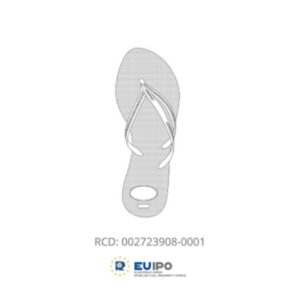In today’s business world, what do Apple, Nike, and Coca-Cola all have in common? Not only are they successful brands, but they’ve all registered their trademarks. So, why should you consider it too? This guide will walk you through why it’s vital to register a trademark and how to do it step by step.

Why is it important to register a trademark?
Brand protection
Registering a trademark is like placing a protective shield around your brand. It gives you the exclusive right to use your brand name and logo. Imagine pouring your heart and soul into creating a brand, only to find another company has stolen your name or logo. It’s gut-wrenching, isn’t it? Well, that’s what registering a trademark helps you avoid.
Competitive advantage
A registered trademark provides a competitive edge. It signals to your competitors that you mean business and you’re ready to protect your brand at all costs. It’s like having a secret weapon in your business arsenal, giving you an upper hand.
Avoidance of infringement
When you register a trademark, you avoid inadvertently infringing on another company’s trademark. It’s like having a map that shows you where not to tread. This can save you from costly legal battles down the line.
The process of registering a trademark
Choosing your trademark
Before you jump in to register a trademark, you need to decide on your trademark. Now, this isn’t as simple as picking a name out of a hat. It’s more like choosing a tattoo – it’s going to stick with you for a while, so choose wisely.
Type of Trademarks
The type of trademark you choose can range from brand names, logos, slogans, or a combination of these. It’s like selecting the right ingredients for a recipe – you need to make sure they all work together.
Trademark search
Once you have your potential trademark, it’s time to carry out a thorough trademark search. This is to ensure that your chosen trademark isn’t already in use or registered by another entity. It’s like checking if your chosen username is available on a new social media platform.
Filing your application
Required documents
Once you’ve confirmed your trademark is unique, it’s time to file your application. This is where you’ll need to gather your identification, business information, and a clear representation of your trademark. It’s like packing for a trip, where each document plays a vital role.
Fees involved
Remember, filing an application also comes with its costs. It’s like paying an entrance fee – a necessary step to get to your destination.
Examination by the registrar
After filing your application, it will be examined by the registrar. They’re like the gatekeeper, ensuring your application meets the requirements and your chosen mark is suitable for registration.
Publication and opposition
If your application passes the examination, it’s published in a trademark journal. It’s like announcing your trademark to the world. If no one opposes your trademark within a certain period, it’s a green light to the final stage.
Registration and maintenance
Once you have gone ahead to register a trademark, it’s not the end of the road. You need to renew your trademark periodically to maintain your rights. It’s like servicing your car to keep it running smoothly.
International trademark registration
For businesses looking to expand overseas, registering your trademark internationally can provide additional protection. It’s like having a passport, giving you access to new territories.
The Madrid Protocol
This system simplifies the international trademark registration process. By filing one application, you can register your trademark in over 90 countries. It’s like buying a ticket that lets you travel around the world.
Advantages of international registration
International registration offers numerous advantages, from protection in multiple countries to cost savings. It’s like getting a package deal, providing greater value for money.
Common mistakes while registering a trademark
Registering a trademark can seem like navigating a maze. There are common pitfalls to avoid, such as selecting a generic trademark or not conducting a thorough search. It’s like avoiding the potholes on a bumpy road.
Conclusion
Registering a trademark is an essential step in protecting your brand. From choosing your trademark to filing your application and maintaining your registration, it’s a journey worth taking. Like embarking on an adventure, it might seem daunting at first, but the rewards are worth the effort. Register a trademark with The Trademarkroom today, contact us for a free consultation to discuss.
FAQs
- What is a trademark? A trademark is a type of intellectual property that includes any unique sign, logo, or symbol that identifies and distinguishes the goods or services of one entity from others.
- How long does it take to register a trademark? The process can take anywhere from 6 to 18 months, depending on the jurisdiction and whether any objections or oppositions are filed.
- Can I use my trademark in other countries if it’s registered in one country? Without international registration, your trademark is only protected in the country it is registered in.
- What happens if I don’t register my trademark? Without registration, you may struggle to prove ownership of your trademark if a dispute arises. It also increases the risk of your brand being exploited by others.
- How often do I need to renew my trademark registration? Typically, a trademark needs to be renewed every 10 years. However, this can vary depending on the jurisdiction.
Written by Ellis Sweetenham – Senior Intellectual Property Law Consultant
After achieving a First Class LLB Law degree from Southampton Solent University in 2016, Ellis went on to complete an LPC LLM in Legal Practice in 2017 at the University of Law. Following her training, Ellis was admitted to the role as a Solicitor in February 2019.











